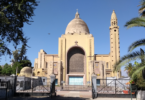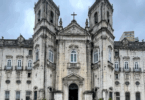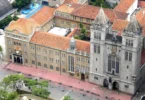
Introduction
St. Lorenz Basilica is a baroque minor Basilica in Kempten, Bavaria, named after the Christian martyr Lawrence of Rome. It is the former abbey church of the Benedictine Kempten Abbey. It is currently used as the parish church of the Roman Catholic parish of St. Lawrence in the Diocese of Augsburg.
The Basilica of Saint Lawrence is a notable attraction in the city of Kempten, Germany. This historic site, nestled in the heart of the Swabia region, is a testament to the rich cultural and religious heritage of the area. The Basilica is renowned for its stunning architecture, featuring intricate designs and a grandeur that speaks volumes of its historical significance. Visitors are often left in awe of its majestic interiors, which are adorned with beautiful frescoes and ornate sculptures. The Basilica of Saint Lawrence is not just a place of worship, but also a symbol of the city’s enduring legacy and a beacon of its historical journey.
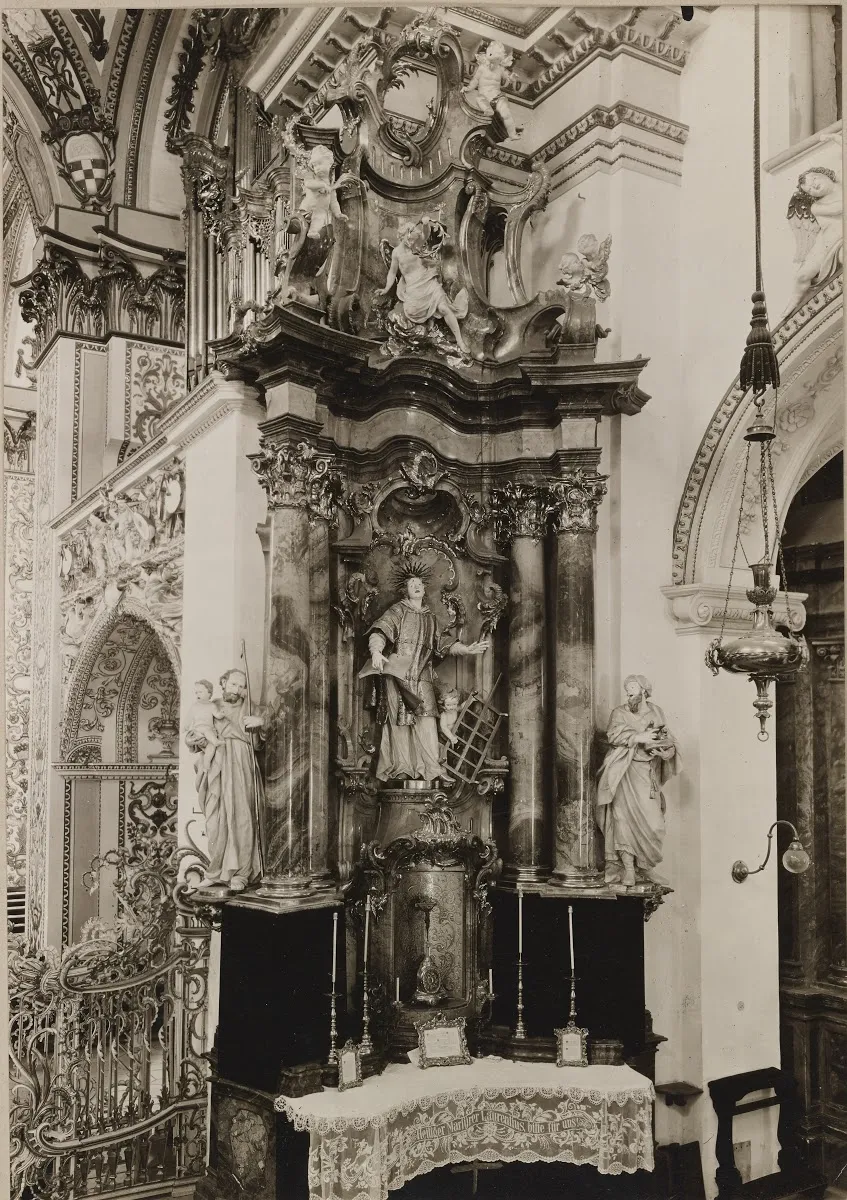
There has been a monastery in Kempten since 752, the first in the entire Allgäu, which was probably moved to the present site of the Residence Kempten after 955. There is evidence of a first church from the eighth century and the three-nave late Gothic parish church “St. Lorenz uffm Berg” on the hill of the Basilica of St Lorenz as predecessor buildings. During Kempten’s time as a twin city, there were repeated disputes between the princely abbey and the imperial city of Kempten.
There is evidence of a first church from the eighth century and the three-nave late Gothic parish church “St. Lorenz muff Berg” on the hill of the Basilica St. Lorenz, built on the site in the 13th century but burned down in 1478.
In 1632, during the Thirty Years’ War, the monastery and church were looted and destroyed by the Swedes and the citizens of the nearby imperial city of Kempten. Prince-Abbot Roman Giel von Gielsberg commissioned the master builder Michael Beer of Vorarlberg to build a new church to serve the parish and monastery. The foundation stone of the Basilica of St. Lawrence was laid on April 13, 1652. This was one of the first large churches built in Germany after the end of the Thirty Years’ War. The building included a residence for the Prince-abbots.
Beer built the nave, the ground floor of the towers, and the choir. He was succeeded by Johann Serro on March 24, 1654. Benefactress Hildegard of the Vinzgau is commemorated in one of the ceiling paintings. The Nikolausaltar is in the north aisle. The church was consecrated on May 12, 1748. In 1803, the monastery was dissolved, and the church became a purely parish church.
In 1900, the twin towers were finally completed. They were built of concrete, which was heavier than the material used before that time. Cracks at the connections to the main building are the result of the completed towers.
In 1969, Pope Paul VI bestowed the honorary title of basilica minor. In December and January, the Bründl Baroque nativity scene can be viewed on selected dates in the crypt below the choir of the Basilika.
Prince-Abbot Roman Giel von Gielsberg then commissioned the construction of the monastery and residence in a palatial building with a representative double church, which served as a monastery and parish church. In 1652 the foundation stone for the church building was laid and from 1670 the church and monastery complex were ready for use. The monastery received its Baroque splendor, which can still be admired today in the State Rooms of the Residence, in the 18th century. In 1802, Bavarian troops occupied the princely abbey and the imperial city of Kempten, whereupon the monastery was dissolved and the Basilica of St Lorenz has been exclusively a parish church ever since.
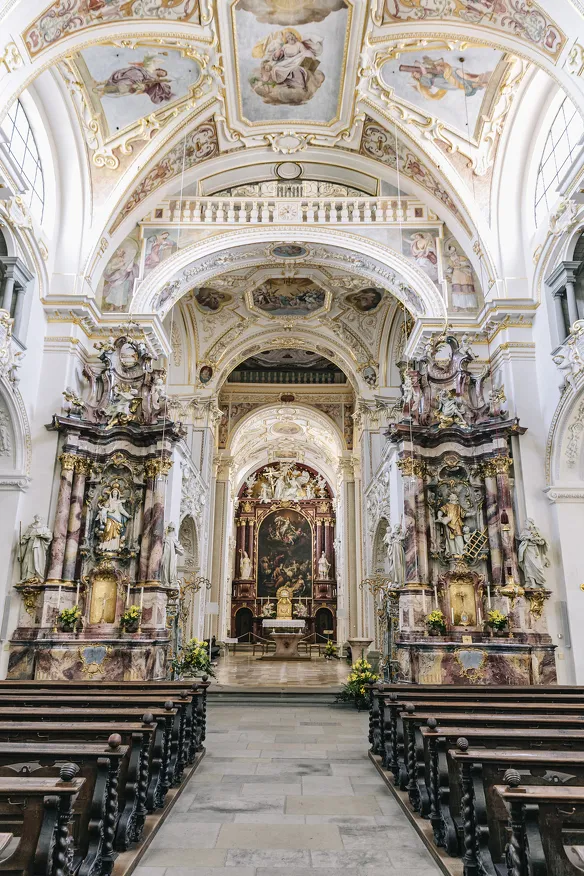
Architectural Style: Baroque architecture
The interior decoration of the Basilica of St. Lorenz began in 1660, featuring notable artistic contributions. Giovanni Zuccalli created intricate stucco work, including raised and sculptural elements, while stucco marble panels were crafted by a “Frau Stuckhatorin,” presumably Barbara Hackl. Andreas Asper contributed to the interior with his frescoes.
Perched on a hill, the Basilica’s impressive double-tower façade and grand dome are striking features, making it a dominant presence in Kempten’s skyline despite its relatively simple exterior. The interior is richly adorned, with a broad central nave flanked by two aisles, each lined with side altars dedicated to various saints. The aisles are lower than the central nave, allowing for two galleries that overlook the main space. The ceiling, with its expansive painted decorations, draws the eye upward to the highly ornate apse and altars.
Places of Worship Nearby
The Basilica of St Lorenz is not to be considered as a single building, but rather the overall picture, which also includes the square that surrounds the church. The southern part of this baroque square is the Hildegardplatz, where the weekly market is held on Wednesdays and Saturdays and where there is also a lot of activity. Around the square, sunbathers cavort on the benches, skaters in front of the Residence and families at the fountain or under shady trees.
Cafés and small shops around the square and in the nearby pedestrian zone invite you to stroll and linger. Those interested in history can visit the State Tooms of the Residence, which provide an insight into the life of the prince abbots. The Basilica of St Lorenz and the Residence Kempten are connected by a building so that the monks could get from the monastery to the church without getting wet. The courtyard garden north of the Residence is also worth a detour.
Reconstruction of the basilica began in 1919, directed by the Historical Monuments Commission. Emile Brunet was charged with reconstruction. As a first step about 3,000 cubic metres (110,000 cu ft) of cut stone and rubble were cleared by German prisoners of war. Some further damage was caused to carvings and decorations in the process. Specialized workers undertook urgent reinforcements of masonry, and parts of damaged sculptures were stored for later restoration. A temporary roof was built to protect the structure from weather, covered by fibro-cement and Ruberoid sheeting.
It took 25 years to complete the basic restoration. The surviving 13th-century stained glass windows were reinstalled in 1948, with modern windows made by Hector de Pétigny (1904–92) to replace those that were missing, The restored basilica was reopened for worship in 1956. The steeple over the transept crossing was only finished in 1983. Further restoration work was undertaken in 2006 to clean the walls and restore the gatehouse to its state at the end of the 17th century.
Feast Day
Feast day : 10th August
The Basilica of St. Lorenz (or St. Lawrence) typically celebrates its feast day on August 10. This date is dedicated to Saint Lawrence, a Christian martyr and deacon who was executed in 258 AD. The basilica, often named in his honor, would observe this day with special liturgical celebrations.
Church Opening Time:
Monday-Friday : 08:00am – 7:00pm
Saturday-Sunday : 08:00am – 8:00pm
Contact Info
Address :
Hildegardpl., 87435 Kempten (Allgäu), Germany
Phone : +49 831 5405600
Accommodations
Connectivities
Airway
Memmingen (FMM) Airport to Kempton distance 45.5 km (27min).
Railway
Kempten Hbf to Basilica of St. Lawrance Church distance 7 min (2.3 km) via B19.




